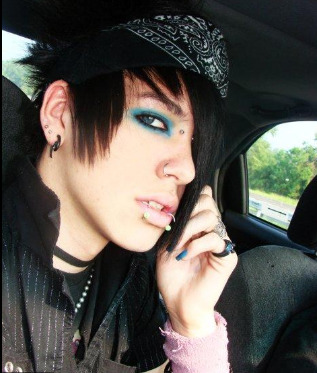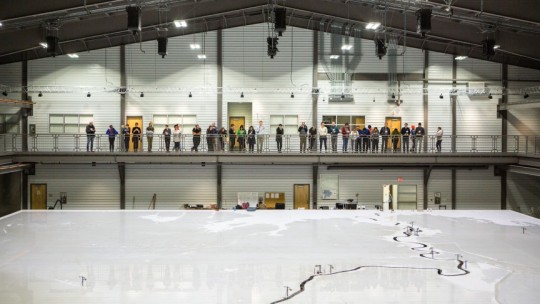#jeremy brian griffis
Explore tagged Tumblr posts
Text
A reporter becomes the target of a vicious smear campaign that drives him to the point of suicide after he exposes the CIA’s role in arming Contra rebels in Nicaragua and importing cocaine into California. Based on the true story of journalist Gary Webb. Credits: TheMovieDb. Film Cast: Gary Webb: Jeremy Renner Anna Simons: Mary Elizabeth Winstead Fred Weil: Michael Sheen John Cullen: Ray Liotta Ronny Quail: Robert Patrick Norwin Meneses: Andy García Coral Baca: Paz Vega Ricky Ross: Michael Kenneth Williams Sue Webb: Rosemarie DeWitt Alan Fenster: Tim Blake Nelson Russell Dodson: Barry Pepper Jerry Ceppos: Oliver Platt Richard Zuckerman: Richard Schiff Quail’s Girlfriend: Jena Sims Rich Kline: Joshua Close Danilo Blandon: Yul Vazquez Ian Webb: Lucas Hedges Eric Webb: Matt Lintz DEA Agent Miller: Gil Bellows Anonymous Agent: Steve Coulter Leo Wolinsky: Dan Futterman Los Angeles Times Editor: Susan Walters Washington Post Editor: David de Vries Doug Farah: David Lee Garver Female Anchor: Rhoda Griffis Ricky Ross Trial Judge: Jen Harper DEA Agent (uncredited): David Alessi Reporter Washington Post (uncredited): Grace Baine DC Business Woman (uncredited): Shaira Barton Self (archive footage) (uncredited): Nancy Reagan Christine Webb: Parker Douglas Film Crew: Producer: Scott Stuber Director: Michael Cuesta Executive Producer: Peter Landesman Producer: Jeremy Renner Producer: Naomi Despres Executive In Charge Of Production: Louis Phillips Cinematography: Sean Bobbitt Novel: Gary Webb Original Music Composer: Nathan Johnson Executive Producer: Pamela Abdy Executive Producer: Michael Bederman Executive Producer: Don Handfield Editor: Brian A. Kates Production Design: John Paino Casting: Avy Kaufman Costume Design: Kimberly Adams Costume Design: Doug Hall Movie Reviews:

View On WordPress
#american journalist#biography#california#central intelligence agency (cia)#crack cocaine#drug trafficking#government conspiracy#investigative journalism#san jose#Top Rated Movies
0 notes
Audio
Bewitched (ft. Lady Nogrady) // Blood on the Dance Floor
your heart in love, as I destroy the end of you
so easily fooled, little boy, to think it's true
#dont fucking @ me this song SLAPS but dont get it twisted i would absolutley kill botdf if given the chance#bewitched#blood on the dance floor#botdf#2011#all the rage!!#dahvie vanity#jayy von monroe#lady nogrady#jesus david torres#jeremy brian griffis#orlando FL#florida#dark fantasy records#emo#scene#electronic#pop#music#audio#my post
6 notes
·
View notes
Note
Hi there! Could you list some nonbinary faceclaims aged 30 and up who do drag and/or wear heavy makeup, specifically POC? Especially any with pink or dyed hair but I’m flexible! I’m willing to make my own icons for my (human ‘verse for a canon) muse if needed so not all of your suggestions need premade resources. Thank you so much fam <3
Kelly Mantle (1976) Cherokee - Two-Spirit and Genderfluid.
Love Masisi / Pierre Alexandre (1978) Afro-Haitian - non-binary - she/her in drag and they/them out of drag.
Honey Mahogany / Alpha Mulugeta (1983) Ethiopian - she/they.
Jackie Cox / Darius Rose (1985) Persian - gender expansive - she/her in drag and he/she/they out of drag.
Bob The Drag Queen / Caldwell Tidicue (1986) African-American - non-binary - he/she.
Honey Davenport / James Heath-Clark (1986) African-American - non-binary - they/them.
Shea Couleé / Jaren Merrell (1989) African-American - she/her in drag and they/them out of drag.
Adore Delano / Daniel Anthony Noriega (1989) Mexican, Unspecified Native American, German - non-binary - "I constantly respond to people that I don’t mind which pronouns they use while addressing me."
Victoria Sin / Sin Wai Kin (1991) Chinese - non-binary - they/them.
Rose Butch (1991) Japanese / White - non-binary - they/them - drag performer.
Rani KoHEnur / Sushant Divgikr (1990) Indian - genderfluid - he/she/they.
Monét X Change / Kevin Bertin (1990) Afro-Saint Lucian - non-binary.
Dahli / Jeremy Brian Griffis (1991) African-American - non-binary - they/he in and out of drag - tw for horror and clown imagery!
Dahlia Sin / Erick Anthony (1991) Afro-Brazilian - non-binary.
Rock M. Sakura / Bryan Steven Johnson Bradford (1990) Filipino, Vietnamese - non-binary.
Hollow Eve / Caitlin Crandall (?) African-American - non-binary - they/them.
Hey anon! Here are all the non-binary drag artists of colour I know of, hope it helps!
6 notes
·
View notes
Text
[People Profile] All We Know About Jayy Von Monroe Biography, Networth, Career, Girlfriend, Family
[People Profile] All We Know About Jayy Von Monroe Biography, Networth, Career, Girlfriend, Family
Jayy Von Monroe Biography, Networth, Career, Girlfriend, Family Who is Jayy Von Monroe? Many people were drawn to Jayy Von Monroe since she is a singer and guitarist best known for being a member of the band “Blood on the Dance Floor.” [table id=241 /] Jayy Von Monroe’s Early Life Jeremy Brian Griffis, better known as Jayy Von Monroe, was born into a wealthy household on, in Orlando,…

View On WordPress
3 notes
·
View notes
Quote
Love is not a trial and error case, nor is it our favorite game, but love is reality that, we at least once in our life, open our eyes for the short moments we let it in. Love shows no mercy for the innocent boy who can’t decide if he’s ever felt this way before. The boy who cries for his one true love because he knows it’s unobtainable. Some days he feels like he can never love again, and then he remembers what he once had, and the sharp pain of the other reality that leads to heartbreak comes stabbing back into his chest. Love has made me who I am, not my heartbreak. We have all felt the glow, the radiance, of another’s swelling emotion for someone they care about so much. But they aren’t different, they are in love. Love is the one true and ultimate form for the human’s soul, that’s why we spend our lives searching for it. Love is something you simply cannot live without.
Jeremy Brian Griffis
4 notes
·
View notes
Photo

The Current
On display at HKW
2020, Mon, Oct 26 — 2020, Sun, Nov 01 (early closure because of Covid-19)
The current exacerbation of social, ecological and political lines of conflict in the United States reveal conflicts that have been concentrating around the Mississippi for some time. As tensions rise around racialized violence, ecological destruction and the Covid-19 pandemic, the historical path dependencies and social-political structures that made them become ever more apparent.
The installation The Current presents field studies by artists, scholars and activists who were involved in the HKW project Mississippi. An Anthropocene River and which sought site-specific approaches to planetary crises along the Mississippi River Basin; a river system that exemplifies current transformations of intertwining histories of earth and settlement, of the bio- and technosphere. The Current presents interdisciplinary research, methodological experiments and works of art that explore the ecological, political, social and technospheric interconnections of the Mississippi River. In the face of the deepening of old and new social divisions, the installation brings together projects that explore new perspectives and spheres of engagement based on solidarity and collaboration for a polyphonic practice of working, living, and surviving in the Anthropocene.
Due to the new COVID-19 regulations the contents of the installation are available online only at shape.anthropocene-curriculum.org.
With contributions by Kayla Anderson, Sara Black, Jeremy Bolen, Isabelle Carbonell, Andrea Carlson, Jennifer Colten, Tia-Simone Gardner, Beate Geissler, Amber Ginsberg, Ryan Griffis, Monica Moses Haller, Derek Hoeferlin, Brian Holmes, Sarah Kanouse , John Kim, Brian Krikbride, Sarah Lewison, LocalStyle (Marlena Novak and Jay Alan Yim), Saundi McClain-Kloeckener, Margarida Mendes, Abbéy Odunlami, Lynn Peemoeller, Claire Pentecost , Oliver Sann, Jenny Schmid, Michael Swierz, Joe Underhill, Monique Verdin, Anna Van Voorhis, Maureen Walrath, Joslyn Willauer, Andrew S. Yang
0 notes
Photo

Mississippi. An Anthropocene River. A collaborative research project on novel epistemic, aesthetic, and educational challenges (2018-19)
'Mississippi. An Anthropocene River' explores the vast but patchy area of the Mississippi in its changing spatio-temporal formations. Its aim is to open up this archival landscape to a larger public and make it legible as a critical zone of habitation and long-term interaction between humans and the environment. From October 2018 to November 2019, several interdisciplinary groups of researchers, artists and stakeholders from civil society will investigate the river basin to develop local approaches to issues of global change and together will forge new methods of transdisciplinary research and education. The Project is developed and organized by Haus der Kulturen der Welt (HKW) and the Max Planck Institute for the History of Science, Berlin (MPIWG).
Process blog.
PROJECT
The Mississippi River Basin is an immense space continually being reshaped by human activities. As a central axis through the continent and a catchment for ecological, industrial and social realities it presents a multifaceted topography of the Anthropocene, the geological epoch of humankind. It designates a peculiar heterogeneous space in which genuinely anthropocenic problems, possibilities and hopes intersect in a unique way, triangulating humans, grandiose ecosystems and the forceful advancement of economic-technological infrastructures.
The river’s meandering path has carved out an iconic landscape in US mythology and has become a symbol for human impact. Barely a river but more of a floodplain before it was massively dredged in the 20th century, the Mississippi river has become a major industrial and agricultural corridor that cuts through the “heartland” of the United States.
Through time, the peculiar river and its ecology has evolved as a constantly shifting ecosystem, a catchment of cultures, a dividing line, a water highway for resources and goods, and a sink for pollutants. From the logging and mining zones in the Upper River area to the high technology and petrochemical centers in the Delta; from the industrial agricultural landscapes of the Midwest to the “dead zones” in the Gulf of Mexico; from the historic transportation network enabling the egregious trade of human forced labor to the social injustices of poverty and deindustrialization today—the Mississippi is a symptom and object of investigation for the radical impact humans inflict on the Earth.
Mississippi. An Anthropocene River is developed and organized by HKW and MPIWG in collaboration with numerous international partners. It is a part of the Anthropocene Curriculum (since 2013), an international long-term project for experimental forms of Anthropocene research and education.
CONTRIBUTORS
Morgan Adamson (Macalester College), Steven Badgett (artist), Daniel Barber (University of Pennsylvania), Jeremy Bolen (School of the Art Institute of Chicago), Mark Borrello (University of Minnesota), Dominic Boyer (Rice University, Houston), Kate Brauman (University of Minnesota), Bruce Braun (University of Minnesota), Nicholas Brown (Northeastern University, Boston), Matthew Coolidge (The Center for Land Use Interpretation), Alison Crowther (Max Planck Institute for the Science of Human History, Jena), Frank Drewnick (Max Planck Institute for Chemistry), Vicente M. Diaz (University of Minnesota), Matthew Fluharty (Outpost Winona), Kim Fortun (University of California), Beate Geissler (University of Illinois), Sam Gould (Minneapolis College of Art and Design), Ryan Griffis (University of Illinois Urbana-Champaign), Orit Halpern (Concordia University Montréal), Monica Haller (University of Minnesota), Brian Holmes (Deep Time Chicago), Andy Horowitz (Tulane University New Orleans), Benjamin Johnson (Fritz Haber Institute of the Max Planck Society), Sarah Lewison (Southern Illinois University), Sarah Kanouse (University of Iowa), Jed O. Kaplan (Max Planck Institute for the Science of Human History), Bonnie Keeler (University of Minnesota), Jason Kelly (Indiana University-Purdue University Indianapolis), Tristram R. Kidder (Washington University in St. Louis), John Kim (Macalester College), Axel Kleidon (Max Planck Institute for Biogeochemistry, Jena), Scott Knowles (Drexel University, Philadelphia), Amy Lesen (ByWater Institute, Tulane University New Orleans), Shanai Matheson (Water Bar), Sebastian Müllauer (artist), Roopali Phadke (Macalester College), Claire Pentecost (School of the Arts Institute of Chicago), Giulia Rispoli (MPIWG, Berlin), Max Ritts (University of Minnesota), Patrick Roberts (Max Planck Institute for the Science of Human History), Oliver Sann (School of the Arts Institute of Chicago), Robert N. Spengler (Max Planck Institute for the Science of Human History), Benjamin Steininger (MPIWG, Berlin), Anna Tsing (Aarhus University Research on the Anthropocene), Thomas Turnbull (MPIWG, Berlin), Joseph Underhill (Augsburg University, Minneapolis), Jesse Vogler (Washington University, St. Louis), Colin Waters (British Geological Survey), Helge Wendt (MPIWG, Berlin), Andrew Yang (School of the Art Institute of Chicago), Jan Zalasiewicz (University of Leicester), and many more
0 notes